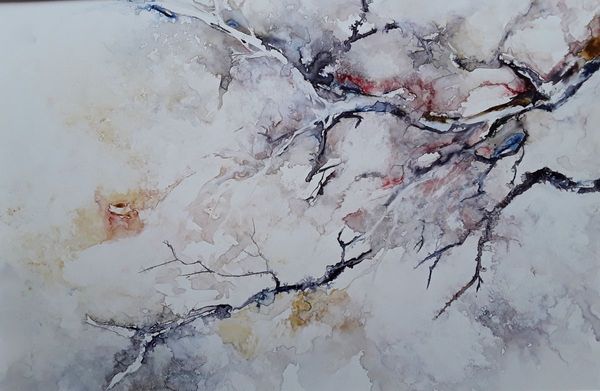Delphine Duchesne is a watercolor artist from France, who has discovered the joys of artistic expression through the Super Yupo® synthetic material. Developing her own technique of painting in which she utilizes the unique characteristics of the waterproof material – an ambitious endeavor – is so intriguing, we had to ask her how she thought of it, and which possibilities it enables, as opposed to classical watercolor papers.
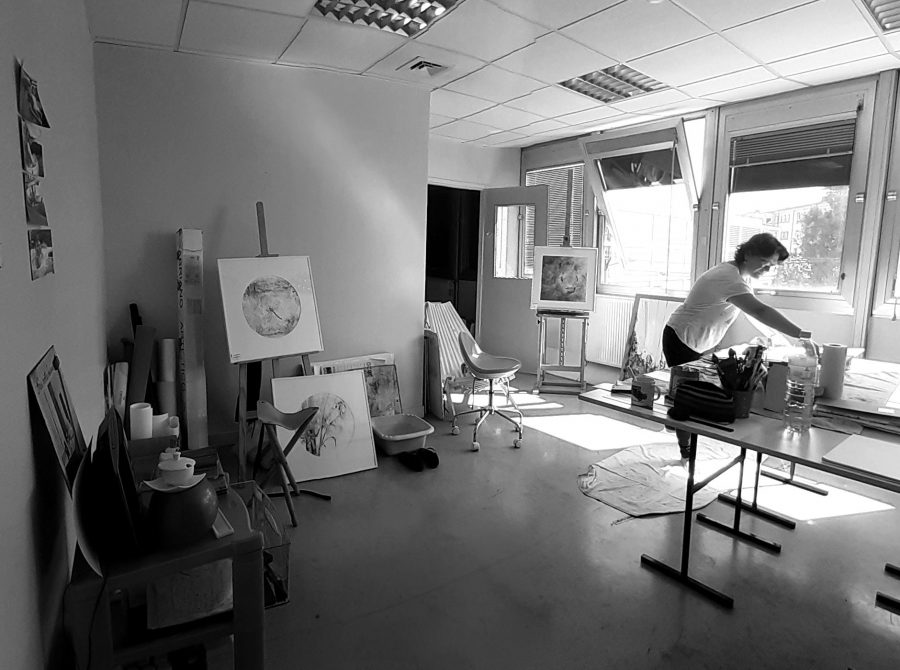
What is your relationship and history with painting?
As a young girl, I discovered painting with a poster of the Nymphéas by Claude Monet that was in my classroom for 4 years! I was also fascinated by handcrafted works and couldn’t imagine how such beautiful things could be made by hand.
During my studies, I worked on Art history and thus visited museums and art exhibitions. As a young adult, I tried to follow drawing courses in Paris but I didn’t have enough time. It’s actually in Mayotte (near Madagascar) in 2000 that I started studying and learning watercolor painting with professionals. I have been painting since 2000, the time in which I have discovered watercolor, pastel, ink, acrylic, oil, and drawing.
I never thought I would be a painter one day but the support and prizes (Prix du public for the first exhibition in 2012 and painting sales ) and requests for watercolor lessons have pushed me to choose this new job in 2012.
My past has allowed me to know myself better which was really important to me. I didn’t want to change jobs after each move. I wanted to have more time with my family, to be freer, express my feelings and recreate the beauty surrounding me through my paintings.
The light of Mayotte, a beautiful French island, it’s landscapes, the people I met and the trips I have done have inspired my first works. Currently, I have been living in Lyon for 2 months, where I founded a workshop downtown with a group of startups, designers, and artists. I participate in exhibitions in France and sometimes abroad.
I have chosen the Super Yupo® material for the technical challenge that it represents. It’s an innovation in the art universe. Few artists currently use it and I wanted to prove that it is possible to use a waterproof synthetic paper for water techniques.
What role does paper play in your paintings? Which possibilities does Super Yupo® synthetic material enable in working with watercolors, as opposed to classical papers and why have you chosen it?
The paper is a tool that I like to use while knowing its pros and cons. I work with different types of papers that I constantly try, in order to know their limits. They have to be resistant and of a certain quality, to last in time. I have chosen the Super Yupo® material for the technical challenge that it represents. It’s an innovation in the art universe. Few artists currently use it and I wanted to prove that it is possible to use a waterproof synthetic paper for water techniques.
Its unique characteristics went into the selection process: it stays flat even when wet, it is resistant and doesn’t tear up, it maintains its whiteness and permits to recover blank spots easily.
Furthermore, it is waterproof which allows for a very different result from the other papers, as it is possible to paint quickly or during a long time on it.
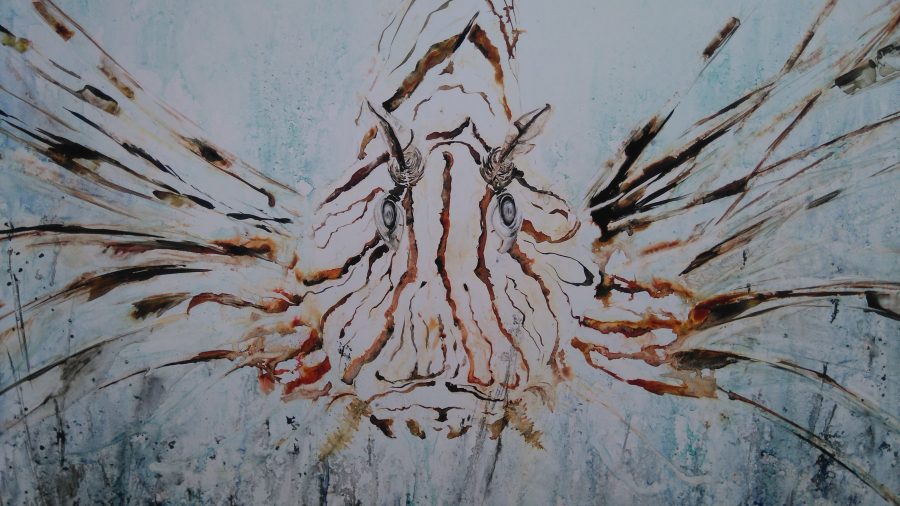
A characteristic that is reassuring for beginners is the fact that Super Yupo® material is washable, and it’s economic because you can reuse it in your work. Because of how the synthetic material is made, it allows you to obtain very different textures than commonly used art papers and I am a fan of it because it opens the door to creative uses and possibilities, such as felt-tip pen, marker, chalk, pastel, ink acrylic, Chinese ink, pencil, basically everything except oil.
Another advantage is that Yupo material follows the new environmental requirements, as it needs less water to produce, therefore less deforestation (because it is synthesized), it generates less waste because it’s reusable, and as an added bonus it’s fun to use even for the adults!
I am curious and love trying new products and new techniques. I read art magazines, I visit Art shops in France and abroad, which is where I found the paper in a BEAUX ARTS shop.
Since I wanted to work on a large scale project for the exhibition in the Grand Palais in Paris last February, I looked Super Yupo® synthetic material up on the internet and contacted them to receive a large format, which could not be found in regular shops.
Super Yupo® material is waterproof, which allows for a very different result, it is washable and economic because you can reuse it. Because of how it’s made, it opens the door to creative uses and possibilities: felt – tip pen, marker, chalk, pastel, ink acrylic, Chinese ink, pencil.. Last but not least, it’s environmentally careful – it needs less water to produce and generates less waste because it’s reusable.
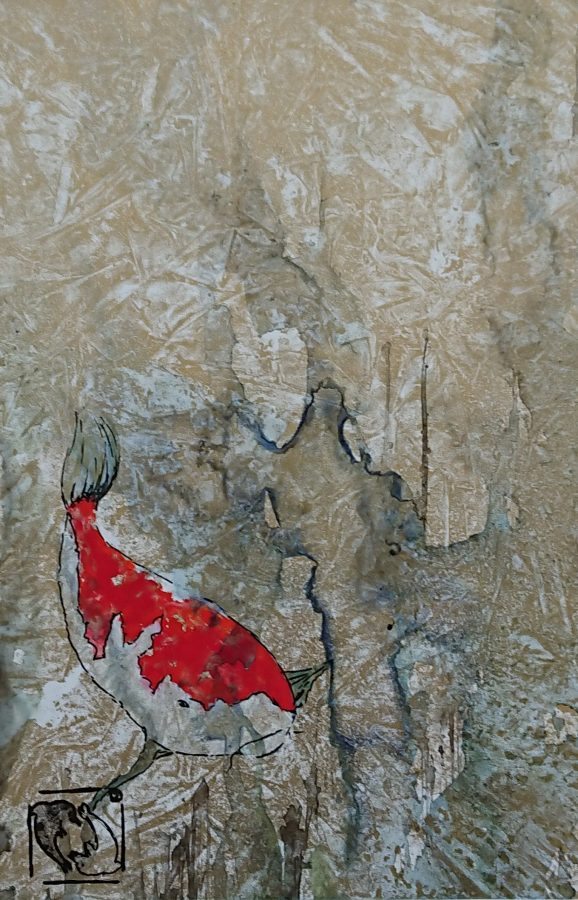
In what kind of setting do you work in when you paint, what kind of tools do you like to work with?
I need to be very calm. My workplace is very luminous, clean and every tool is easily accessible. I mainly work while standing. I use Chinese brushes, watercolors brushes and rubber brushes plus all that I can find in nature (leaves, sticks…)
What draws you to watercolors? Which colors do you often include in your pallet and why?
I love water painting for various reasons! First of all, it’s difficult to master, as it takes years of practice. Secondly, watercolor painting has a wide range of possible uses (the need of only a few tools, various means, possible association with other mediums). Another reason why watercolors fascinates me is the need for work on oneself, which is obligatory to succeed: you have to be always curious, stubborn, patient and to know how to accept surprising results and how to let go. It’s a technique which has infinite possibilities, simply put, the fact is it is a very rich universe. Furthermore, the transparency and luminosity of the colors is remarkable.
I mainly use the three primary colors and I sometimes add two colors, although I never use more than 5 colors at a time. However, I always take great care of the composition of the colors to keep the transparency and the appearing clarity of the work: granular, transparent, semitransparent or opaque. I use paint in tubes or raw pigments that I prepare. I also work with china ink, acrylic ink and mixed media. With the three primary colors, I create all the other colors of the chromatic circle and I leave a lot of blank spots on my works to incite the observer’s imagination.
Your subjects are mainly natural environments and animals. Where do you find inspiration for your work?
Sources of inspiration can be anywhere for me! What I see, what I feel, what I read, the music I listen to, but also my dreams, the people I meet…anything that can feed my imagination, my senses are always awoken. It is exhausting but so rich!
Tell us a little bit about your watercolor workshop what can people discover there.
The visitors could see how I work, which tools I use and how I organize my work starting from the idea to the realization. They could also make a custom order by choosing with me the subject, the format, the paper, the technique and the colors in the painting. Furthermore, my visitors could also find finished paintings of all the different techniques I use.
Check out Europapier’s Yupo assortment!
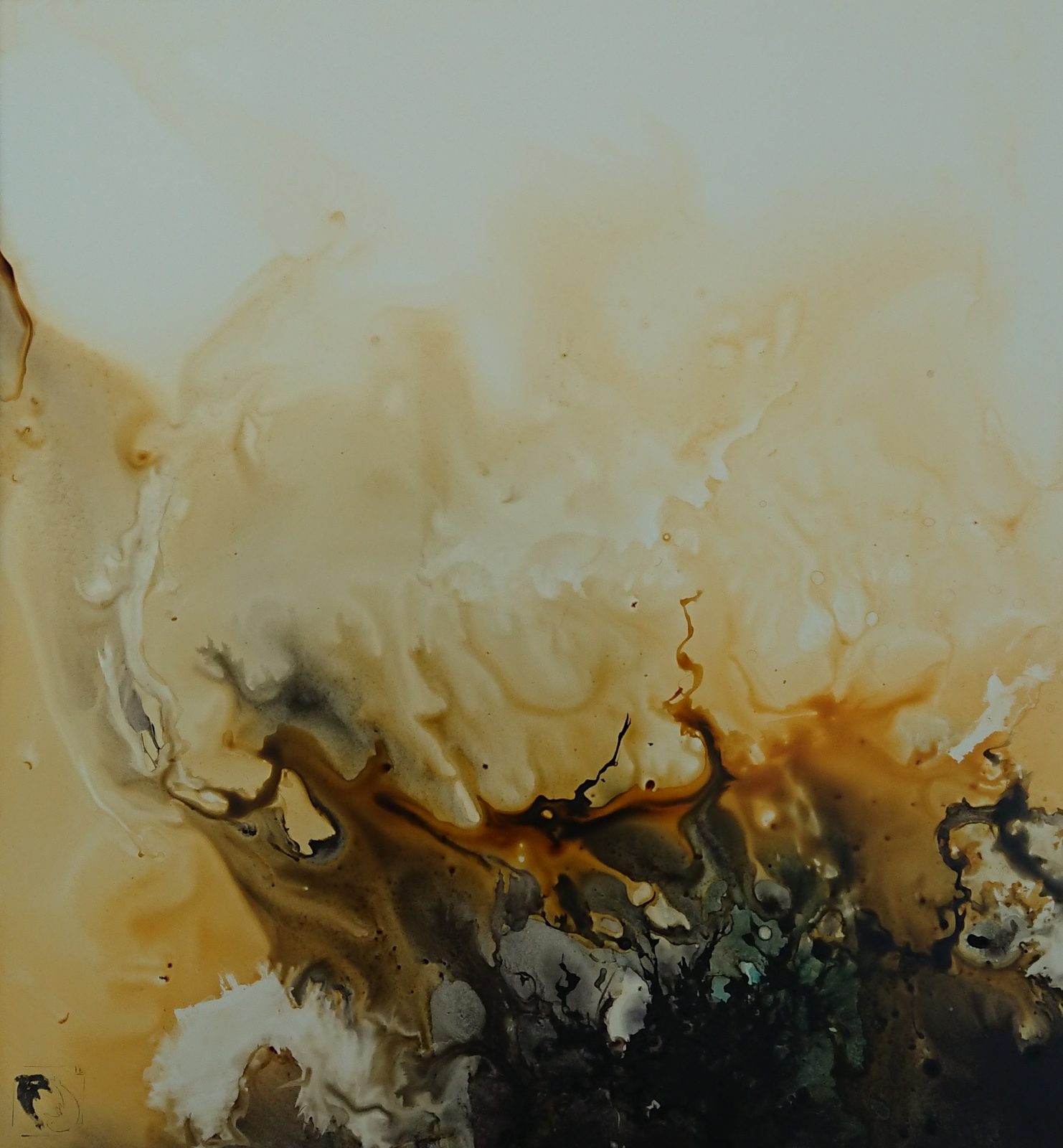
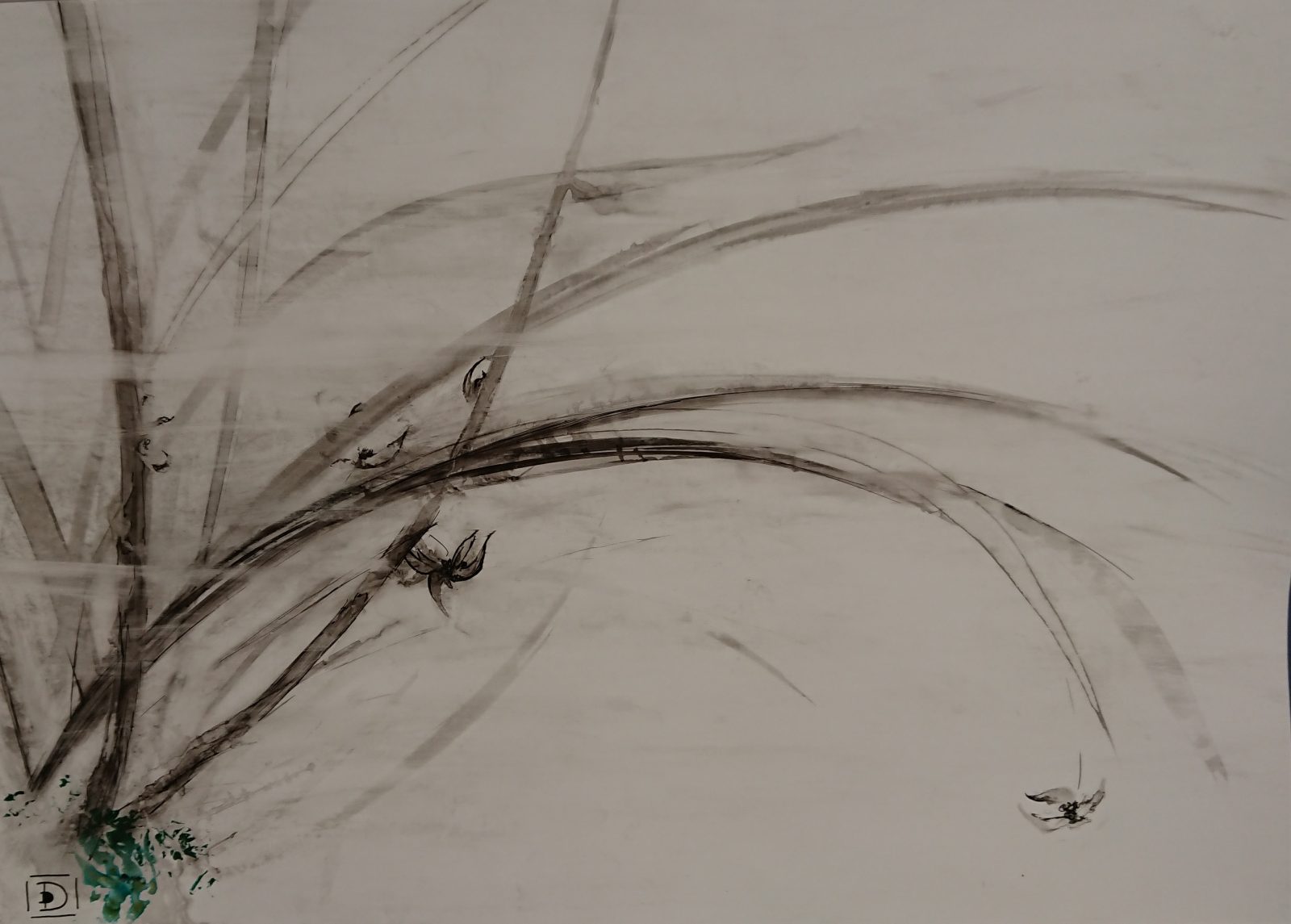
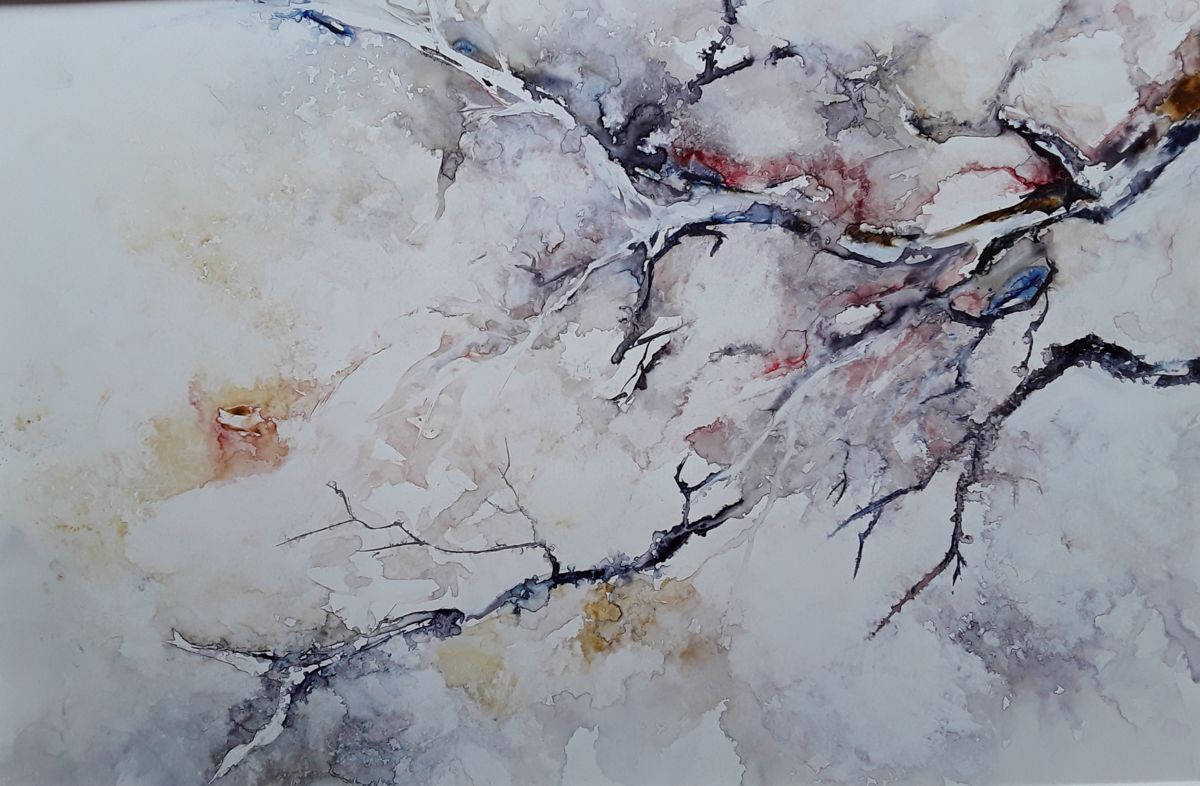
Images © Delphine Duchesne

